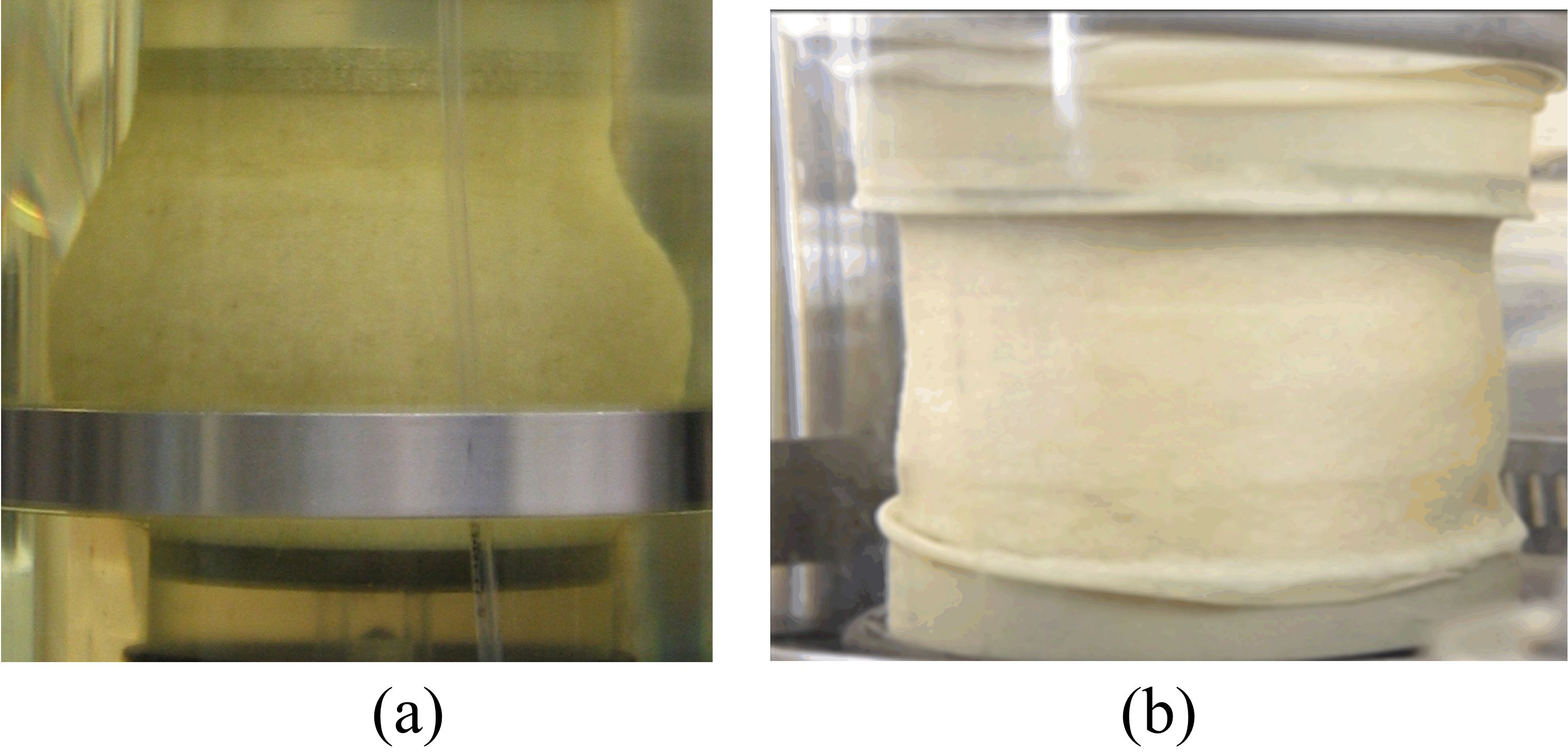Abouzar Sadrekarimi, Ph.D., P. Eng.
Contact
Research Director, Geotechnical Research Centre
Department of Civil and Environmental Engineering
Spencer Engineering Building
Room SEB 3010D
Western University
asadrek@uwo.ca
Projects
Ralph Peck (1980): "It is the misuse or excessive use of theory of which I am critical, not theory itself"
Critical State Soil Mechanics
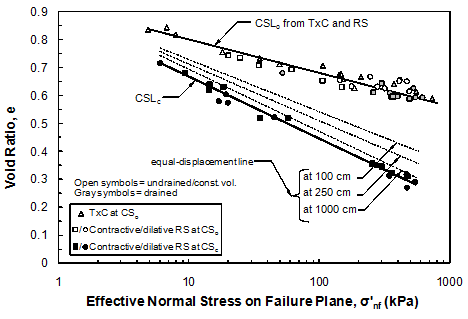 I have investigated critical states through triaxial compression (TxC) and ring shear (RS) tests. I have found that the critical state line (CSL) could be separated into: a) without particle crushing (CSLo) that is reached in both TxC and RS tests, and b) with particle crushing (CSLc). When particles of sand damage, much larger shear displacement is required to reach critical state that is only possible in RS. CSLc is located at a denser void ratio and steeper than CSLo. In contrast to previous investigations on characterizing CSL with TxC, CSLo and CSLc are separate lines not extensions of each other. This would have significant implications on modeling particle crushing in sand constitutive models. The figure left shows CSLo and CSLc for Illinois River sand.
I have investigated critical states through triaxial compression (TxC) and ring shear (RS) tests. I have found that the critical state line (CSL) could be separated into: a) without particle crushing (CSLo) that is reached in both TxC and RS tests, and b) with particle crushing (CSLc). When particles of sand damage, much larger shear displacement is required to reach critical state that is only possible in RS. CSLc is located at a denser void ratio and steeper than CSLo. In contrast to previous investigations on characterizing CSL with TxC, CSLo and CSLc are separate lines not extensions of each other. This would have significant implications on modeling particle crushing in sand constitutive models. The figure left shows CSLo and CSLc for Illinois River sand.
Micro-mechanical Behavior of Granular Soils
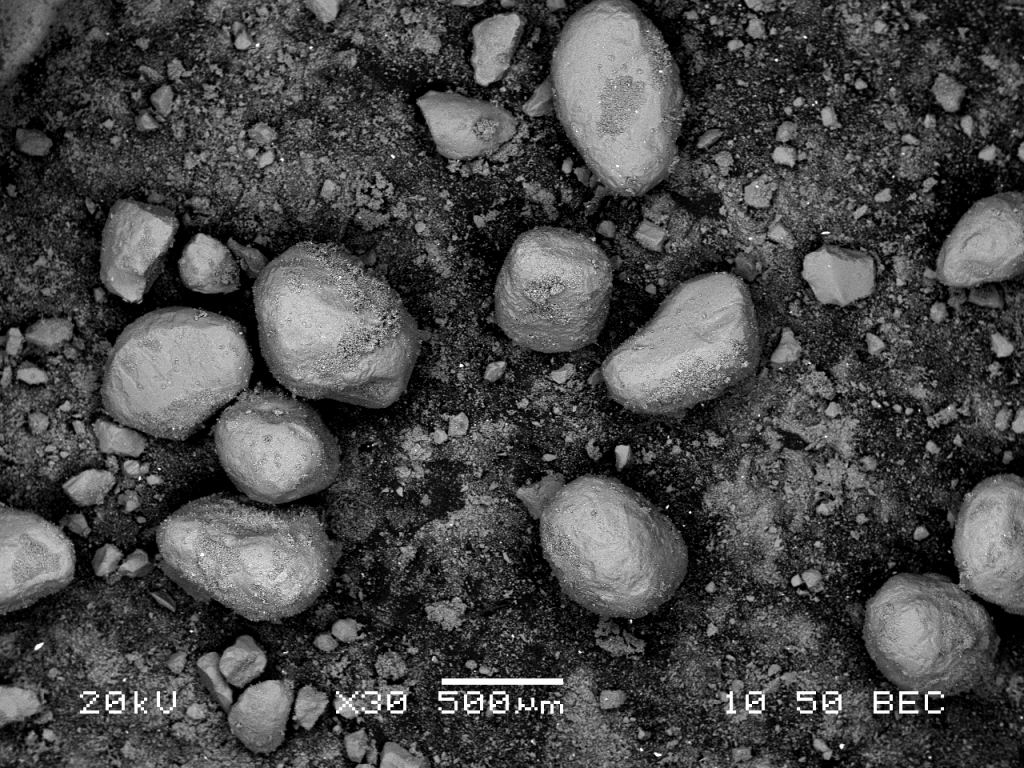
Ottawa sand particles crushed during shear in ring shear test (Sadrekarimi 2009)
At large shear displacement particles of sand would damage irrespective of sand specimen density even at effective normal stresses as low as 30 kPa.In contrast to the intuitive preception that softer particles may damage more, these particles deform at particle to particle contacts, increasing their contact area and reducing stress concentration and therefore would undergo less damage.
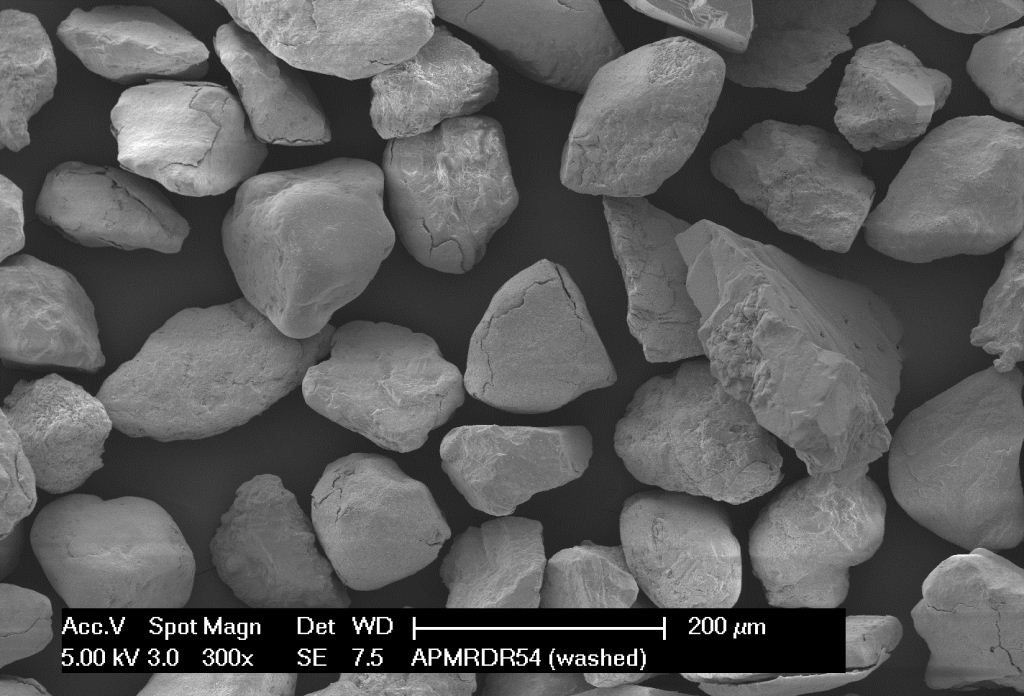
Mississippi River sand particles damaged in ring shear test (Sadrekarimi 2009)
Following figures show SEM images of a incompressible (Ottawa) and compressible (Mississippi River) sands. Particle size and characteristics also determine shear band thickness and how it is developed. This video shows shear banding in a ring shear experiment on Mississippi River sand.
Physical Modelling of Retaining walls
I have done several reduced scale 1g physical model shaking table experiments on seawalls. Below figures and video show these models. The seismic lateral earth pressures and displacements show very good agreement with those from pseudo-static analysis (Mononobe-Okabe's method) and sliding block estimates. Using model tests data I have aslo assessed soil dynamic properties (shear modulus and damping) shown in the following figures. This video [Link] shows one of these experiments.
View of physical model test on broken-back quay wall before the experiment (Sadrekarimi 2004)
Interpreting Sand State from Cone Penetration Testing (CPT)
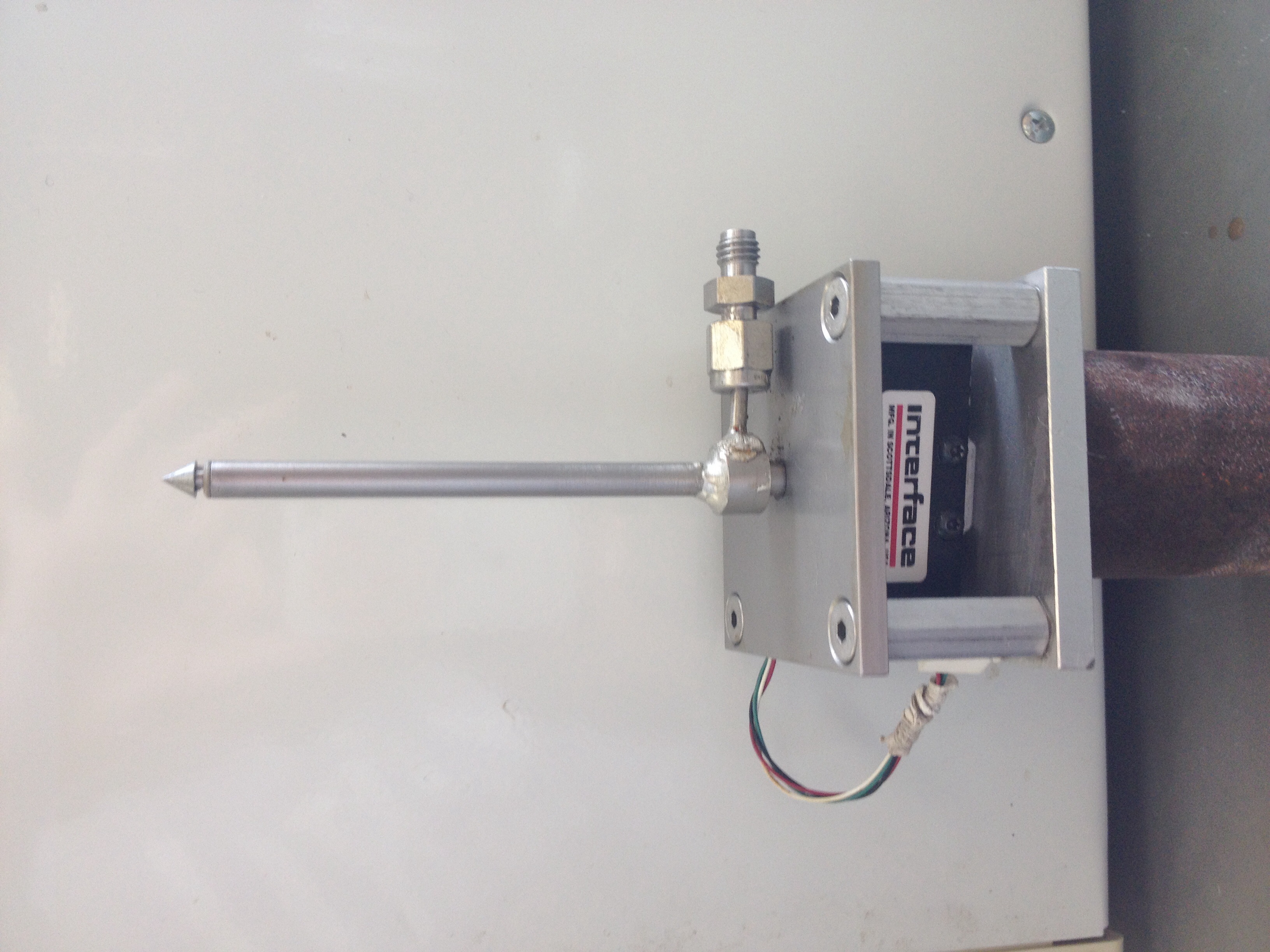 CPT is now becoming the most widely used tool for in-situ investigation of soil profiles. The primary advantage of CPT is that it provides a continuous measurement throughout soil depth. On the other hand, whether a sand is liquefiable or not is an important question that could be answered by CPT, provided that we use accurate and reliable correlations. We have recently developed a novel miniature cone penetrometer to investigate cone penetration response in a controlled chamber under precisely controlled laboratory conditions. A modified triaxial cell is used for sample preparation and containment of the sample during cone penetration. The miniature cone can measure cone tip resistance, sleeve friction and excess pore water pressure developed at the cone shoulder. While cone tip resistance is measured by a separate load cell, sleeve friction is obtained by subtracting cone tip resistance from a combined measurement of tip resistance and sleeve frictional force.
CPT is now becoming the most widely used tool for in-situ investigation of soil profiles. The primary advantage of CPT is that it provides a continuous measurement throughout soil depth. On the other hand, whether a sand is liquefiable or not is an important question that could be answered by CPT, provided that we use accurate and reliable correlations. We have recently developed a novel miniature cone penetrometer to investigate cone penetration response in a controlled chamber under precisely controlled laboratory conditions. A modified triaxial cell is used for sample preparation and containment of the sample during cone penetration. The miniature cone can measure cone tip resistance, sleeve friction and excess pore water pressure developed at the cone shoulder. While cone tip resistance is measured by a separate load cell, sleeve friction is obtained by subtracting cone tip resistance from a combined measurement of tip resistance and sleeve frictional force.
Energy-Based Liquefaction Analysis
 In the basic liquefaction triggering analysis of a saturated granular ground, shear stress applied by an earthquake is compared with soils cyclic resistance to liquefaction. If soil liquefaction resistance is less than the shear stress applied by the earthquake, liquefaction occurs. An alternative approach is comparing the shear strain applied by an earthquake with soil threshold shear strain (beyond which soil densification and excess pore water pressure develop). The energy method combines these two approaches (as energy is simply the product of stress and strain), and since energy is a scalar parameter, it is independent of type and path of loading. In this study, liquefaction triggering will be studied in terms of applied energy per unit volume of the soil and liquefaction triggering curves based on unit energy will be developed.
In the basic liquefaction triggering analysis of a saturated granular ground, shear stress applied by an earthquake is compared with soils cyclic resistance to liquefaction. If soil liquefaction resistance is less than the shear stress applied by the earthquake, liquefaction occurs. An alternative approach is comparing the shear strain applied by an earthquake with soil threshold shear strain (beyond which soil densification and excess pore water pressure develop). The energy method combines these two approaches (as energy is simply the product of stress and strain), and since energy is a scalar parameter, it is independent of type and path of loading. In this study, liquefaction triggering will be studied in terms of applied energy per unit volume of the soil and liquefaction triggering curves based on unit energy will be developed.
Development of Improved Methods for Static Liquefaction Analysis
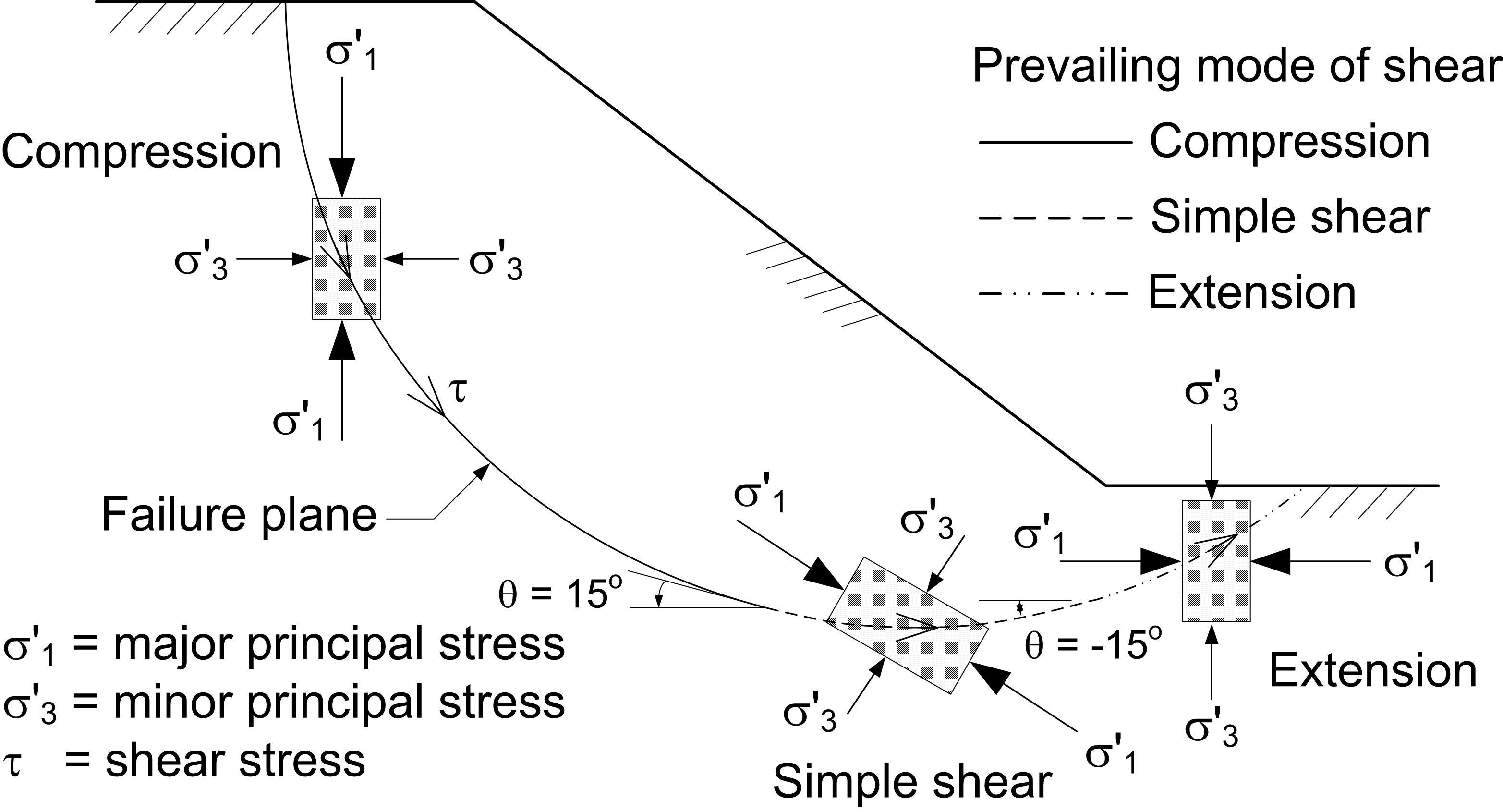 This study investigates the effects of variations in the direction and relative magnitudes of principal stresses associated with different modes of shear and ground slopes on static liquefaction failure of cohesionless soils. Empirical relationships are developed between soil brittleness index and maximum excess pore water pressure ratio to characterize soil shearing behavior observed in a large database of undrained laboratory shear tests collected from the past literature. The application of these relationships for estimating the static liquefaction triggering strength of cohesionless soils under sloping grounds is described for plane-strain boundary conditions and the results are compared with those back-calculated for several cases of static liquefaction flow failures. The proposed procedure incorporates variations in mode of shear and initial stress anisotropy in an empirical procedure based on in-situ penetration tests.
This study investigates the effects of variations in the direction and relative magnitudes of principal stresses associated with different modes of shear and ground slopes on static liquefaction failure of cohesionless soils. Empirical relationships are developed between soil brittleness index and maximum excess pore water pressure ratio to characterize soil shearing behavior observed in a large database of undrained laboratory shear tests collected from the past literature. The application of these relationships for estimating the static liquefaction triggering strength of cohesionless soils under sloping grounds is described for plane-strain boundary conditions and the results are compared with those back-calculated for several cases of static liquefaction flow failures. The proposed procedure incorporates variations in mode of shear and initial stress anisotropy in an empirical procedure based on in-situ penetration tests.
Electrical Resistivity Measurement of Soils
The approach of using geophysical techniques by measuring the electrical resistance of cohesionless soil can be used to define many geotechnical parameters and physical properties of sand without the need to obtain field samples for laboratory tests, thereby minimizing the effects of soil disturbance. This study presents an experimental testing program for investigating the effects of pore water salinity, soil fabric, porosity, and fines content on electrical resistivity of saturated sands. The results show that the electrical resistivity of saturated sands decreases with increasing porosity, or increasing electrolyte concentration and fines content at a certain porosity, while sand fabric and gradation have relatively minor influence. Empirical correlations are thus developed for estimating sand porosity and hydraulic conductivity. The proposed correlations would be useful engineering tools to determine the in-situ porosity and seepage characteristics of sands.
Compressibility of an Ontario Soft Clay
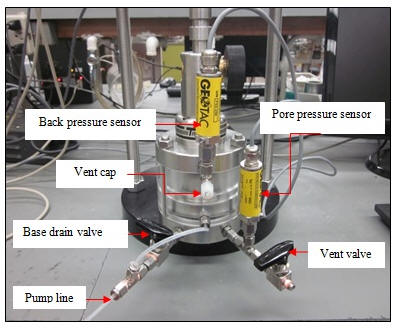 This study included an extensive investigation of the consolidation characteristics of a soft clay from central Ontario, analysis of field settlement measurements, and recommendations for reducing and slowing the settlement of the highway bridge. The study was conducted in collaboration with Thurber Engineering (Oakville, Ontario) and Ontario Ministry of Transportation (MTO). A computer-controlled controlled-rate-of-strain consolidation device was used for measuring the compressibility of clay samples.
This study included an extensive investigation of the consolidation characteristics of a soft clay from central Ontario, analysis of field settlement measurements, and recommendations for reducing and slowing the settlement of the highway bridge. The study was conducted in collaboration with Thurber Engineering (Oakville, Ontario) and Ontario Ministry of Transportation (MTO). A computer-controlled controlled-rate-of-strain consolidation device was used for measuring the compressibility of clay samples.
Laboratory Testing of Soil
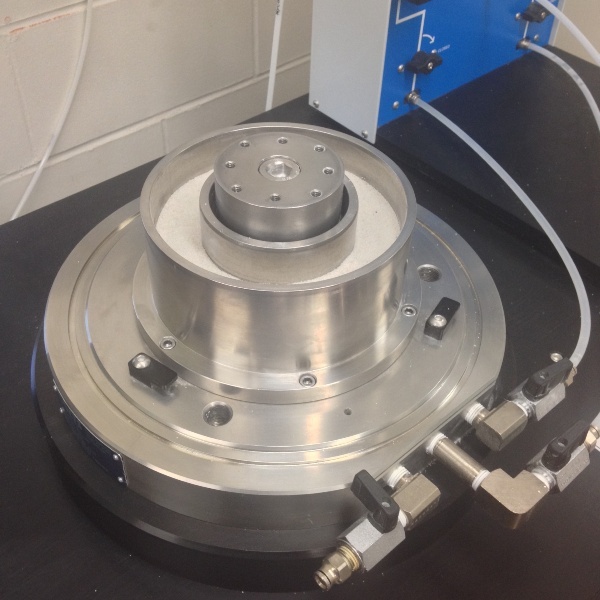 I have been involved with advanced laboratory testing of soil, data interpretation and using data in geotechnical analyses. Below are some pictures of triaxial and ring shear tests. Some of the projects carried out using these equipment include investigating liquefaction behavior of silts and sandy silts, and specimen size effect on shearing behavior of a triaxial test specimen.
I have been involved with advanced laboratory testing of soil, data interpretation and using data in geotechnical analyses. Below are some pictures of triaxial and ring shear tests. Some of the projects carried out using these equipment include investigating liquefaction behavior of silts and sandy silts, and specimen size effect on shearing behavior of a triaxial test specimen.